Swedish startup, CorPower, which has secured €32 million in funding, claims to have developed technology that’s five times more efficient than previous state-of-the-art wave power technology.
CorPower Ocean
CorPower Ocean is a Swedish-based renewable energy company with pioneering wave energy technology. Established in 2012, the company was co-founded by Patrik Möller and Dr. Stig Lundbäck, and has since positioned itself as a leading innovator in the marine energy sector. CorPower says its vision is to harness the immense, untapped power of the ocean to help meet global energy needs sustainably.
The Heart of the Technology
CorPower’s wave energy converter (WEC) technology is unique and draws its inspiration from the human heart. For example, the company’s design is based on the principles of the Dynamic Adaptive Piston Pump, patented by Lundbäck, which mimics the heart’s dual-action pumping mechanism. Just as the heart uses energy efficiently, CorPower’s WEC is designed to maximise energy capture while minimising waste, converting the natural motion of ocean waves into electricity.
The Golden Buoy
The core of CorPower’s innovation lies in its point-absorber ‘golden buoy’ system (so-called because it looks like a large, gold-coloured buoy in the water). The buoy is tethered to the seabed and moves with the vertical motion of the waves, capturing energy both as it rises and falls. Its innovative “WaveSpring” technology, stores energy from wave motion and releases it to drive power generation. Also, CorPower’s system utilises predictive algorithms that anticipate incoming waves, allowing it to optimise energy capture while protecting the buoy from damage during storms. This not only improves the energy yield but also enhances the device’s survivability in rough sea conditions.
Efficiency and Survivability
One of the most significant breakthroughs CorPower claims is that its WEC can deliver five times more energy per tonne of material compared to traditional wave energy technologies! The company says the secret to this efficiency lies WEC’s ability to amplify wave motion during normal conditions while de-tuning itself during extreme weather. For example, in trials off the coast of Portugal, CorPower’s C4 WEC withstood storm waves as high as 18.5 metres while still generating electricity.
This combination of efficiency and durability addresses two of the key challenges in wave energy, i.e. energy capture and survivability.
Why Wave Energy?
The oceans are one of the largest untapped energy sources on the planet. Waves are more predictable than wind and solar, providing a consistent source of energy that could help balance the intermittent nature of other renewables. Wave energy is available around 90 per cent of the time, making it an excellent candidate for reliable, “baseload” power. CorPower’s technology, therefore, appears to be a significant step forward in making this energy source commercially viable.
Funding and Partnerships
Although the wave energy sector has historically been plagued by high costs and technical failures, CorPower seems to be bucking this trend. For example, in 2023, the company secured €32 million in Series B1 funding, the largest single investment in wave energy technology to date. The company says this funding will support the commercialisation of its C4 system and further scaling efforts.
Investors, including EIT InnoEnergy and SEB Greentech Venture Capital, are backing CorPower, reportedly due to the transformative potential of its technology in reducing greenhouse gas emissions.
Real-World Trials Under Way Off Portugal
This financial backing has allowed CorPower to progress through several stages of testing and development, with the C4 system now undergoing real-world trials off the coast of Portugal. The company’s plans extend beyond individual units to full-scale wave farms, with clusters of buoys working together to generate energy. CorPower aims to achieve commercial scale by 2026 with projects such as a wave farm off the coast of Ireland in partnership with Ireland’s state-owned electricity company, Electricity Supply Board (ESB).
Scalability and the Future of Wave Farms
CorPower is setting its sights on creating utility-scale wave energy farms, capable of generating 10-30 MW of electricity using multiple C4 buoys. These clusters, known as “CorPacks,” can be deployed to meet energy needs for coastal communities and industrial consumers alike. By automating the production of buoy hulls with its “mobile factory” concept, CorPower aims to bring down costs, producing each buoy in just 48 hours.
Cost Competitive
In terms of the levelised cost of electricity (LCOE), CorPower’s target is €71/MWh, which would make wave energy competitive with established renewables like wind and solar. If successful, this cost-efficiency could mark a turning point for wave energy’s role in the global energy mix.
The Road Ahead
CorPower’s journey reflects a broader resurgence of interest in marine energy, buoyed by government support and private investment. For example, the European Union and the United States are making substantial investments in ocean energy, recognising its potential to contribute to a more resilient, sustainable energy grid. As CorPower’s co-founder Patrik Möller notes, wave energy has the potential to become the third largest source of global energy, trailing only wind and solar. Möller has highlighted the critical role that wave energy can play in balancing the renewable energy mix, saying: “CorPower Ocean is on a mission to power the planet with clean energy from ocean waves. Due to its consistent and complementary power profile, it helps bring stability to the clean energy mix—plugging the voids of wind and solar power—to allow a world powered entirely by renewables, 24/7 each day of the year”.
For CorPower, the next steps involve scaling its technology, proving its bankability, and securing long-term partnerships with energy providers which would put the company in a position to lead the charge in making wave power a mainstream energy source.
Not The Ony Company Doing It
Despite its funding, partnerships, and promising market position, it should be noted that, as expected in a relatively new market, CorPower is not the only company working to develop advanced wave energy technologies. Others making significant strides in wave energy technology include:
– Finland based AW-Energy (WaveRoller). The WaveRoller technology uses a fully submerged wave energy converter with oscillating underwater panels mounted to the seabed to capture the movement of ocean swells. As the panels move back and forth with the waves, they drive a hydraulic piston that generates electricity. Being submerged helps the WaveRoller avoid the damage that surface-based devices face during storms. Also, it can generate power consistently because ocean swells are present most of the time, even when wind and solar energy are intermittent. AW-Energy has already connected its WaveRoller to the Portuguese grid, proving the system’s grid-readiness.
– Based in the UK, Mocean Energy has developed a wave energy converter that looks like a floating, hinged raft. This device captures energy as its two connected arms move relative to each other in response to passing waves. Mocean’s compact design is particularly suited for generating off-grid power in the oil and gas industry, where clean power is needed for remote subsea operations. Mocean Energy is partnering with several major energy companies, including Shell, to explore microgrid power solutions for offshore oil installations.
– Israel-based Eco Wave Power has taken a novel approach by installing its wave energy converters on existing marine structures like breakwaters and piers. Their system uses floaters that rise and fall with the waves, driving a hydraulic piston to generate electricity. One key advantage of Eco Wave Power’s system is that it doesn’t require the complex and expensive offshore infrastructure of other wave energy devices. This reduces installation and maintenance costs significantly. Additionally, because it’s installed onshore or nearshore, it’s easier to access for repairs.
– Danish company WavePiston, offers a modular wave energy solution that consists of multiple moving plates connected along a tether. These plates convert the kinetic energy of ocean waves into pressurised water, which drives turbines to generate electricity. WavePiston’s design is simple yet effective, lowering production and operational costs. Its system is particularly scalable, with arrays of plates installed across large areas of the ocean, making it suitable for deployment in energy-intensive projects.
– Seattle-based Oscilla Power’s ‘Triton’ is a two-part wave energy converter that consists of a surface float and a submerged ring that oscillate independently of each other. This unique motion captures more energy from waves than traditional point-absorbers. One of Triton’s key advantages is its multi-axis energy capture system, which harvests energy from both the heave (up and down) and surge (side to side) motions of waves. This increases its efficiency across different wave conditions, and its submerged components make it more resilient to extreme weather.
The fact that so many companies globally are now involved in developing these technologies illustrates how the concept of harnessing wave energy is undergoing a significant resurgence.
The Disadvantages of Wind Power
Although wave energy technology (such as CorPower’s solutions) appear to hold great promise, it should be acknowledged that there are several key challenges that have hindered its widespread adoption. These include:
– The high initial costs. Wave energy devices are expensive to design, manufacture, and install due to the harsh marine environment they must withstand. These high upfront costs make it difficult for wave energy to compete with more established renewables like solar and wind.
– Maintenance and durability. Ocean conditions lead to wear and tear, corrosion, and mechanical failures. Repairing devices located far offshore is complex and costly, adding to operational expenses.
– Environmental concerns. Wave energy devices may disturb marine ecosystems, with potential impacts such as noise pollution, habitat disruption, and electromagnetic interference from subsea cables.
– Intermittency and variability. While wave energy is more predictable than solar or wind, wave intensity fluctuates, requiring energy storage or backup solutions to ensure grid reliability.
– Location-specific limitations. Not all coastal regions have the strong, consistent waves needed for efficient energy production, limiting the global applicability of wave energy.
– Complex grid Integration. Laying subsea cables and managing energy transmission over long distances add complexity and cost to connecting wave farms to the grid.
– Lack of proven commercial success. Despite advancements, wave energy still lags in commercial deployment, which makes investors cautious about committing to the technology.
However, although significant, these barriers represent areas of ongoing innovation, as developers work to improve durability, lower costs, and enhance the efficiency of wave energy systems.
What Does This Mean For Your Organisation?
Wave energy now seems to be really gaining momentum as a viable and essential component of the global renewable energy mix and CorPower’s technology could position it as one of the frontrunners of this movement. The company’s unique wave energy converters, inspired by the pumping action of the human heart, demonstrate the potential for efficient and durable solutions to capture the ocean’s vast, consistent energy. By addressing two of the most persistent challenges in the wave energy sector, i.e. energy capture efficiency and survivability, CorPower looks like having the potential to finally bring wave power into the mainstream.
However, despite its clear advantages, wave energy still faces significant hurdles that could limit its near-term expansion. High installation costs, technical durability, and the complexities of grid integration remain obstacles to overcome. Also, the ocean is a harsh environment and designing systems that can operate efficiently while resisting corrosion, mechanical failure, and environmental disruption is not straightforward. It’s also a concern that, without proven large-scale commercial success, wave energy technology must still win over sceptical investors who are more likely to fund well-established renewable sectors like wind and solar.
That said, CorPower’s progress could signal a promising future for wave energy. Real-world trials, strategic funding, and collaborative partnerships with major energy players such as Ireland’s ESB reflect the increasing confidence in the potential of wave energy. As governments and private investors continue to focus on diversifying the renewable energy portfolio, wave energy is likely to find its place, complementing other renewables to provide a more stable and reliable power source.


